Nikon AF-S DX Nikkor 18-55mm f/3.5-5.6G VR II Review
-
Ease
of Use -
Sample
Images -
Lens
Specs -
Rating &
Conclusion -
Main
Rivals -
Review
Roundup - Comment
-
More…

Introduction
The AF-S DX Nikkor 18-55mm f/3.5-5.6G VR II is a new standard kit lens for Nikon's APS-C DSLRs, first launching with the D3300 camera. The AF-S DX Nikkor 18-55mm f/3.5-5.6G VR II features a retractable design, 11 optical elements in 8 groups, 7 rounded diaphragm blades, a Silent Wave Motor which provides smooth and quiet auto-focus, and a minimum focus distance of 25cm. The Nikon AF-S AF-S DX Nikkor 18-55mm f/3.5-5.6G VR II lens is available now priced at £229.99 / $249.95 or in a kit with the D3300.
Ease of Use
Tipping the scales at exactly 195 grams, the AF-S DX Nikkor 18-55mm f/3.5-5.6G VR II is one of the lightest APS-C lenses that Nikon produces. Coupled to the Nikon D3300, as seen in the photos below, the lens feels well-balanced.
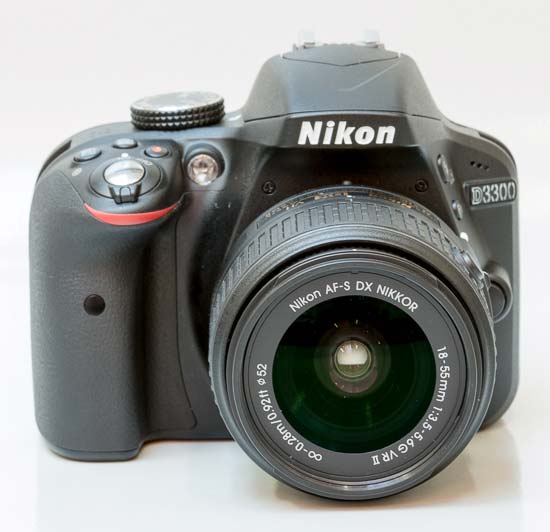 The AF-S DX Nikkor 18-55mm f/3.5-5.6G VR II lens mounted on a Nikon D3300
The AF-S DX Nikkor 18-55mm f/3.5-5.6G VR II lens mounted on a Nikon D3300
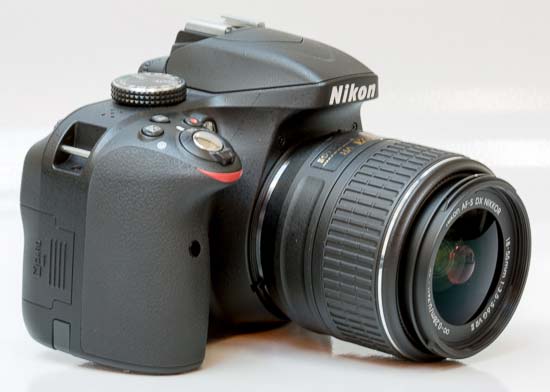 The AF-S DX Nikkor 18-55mm f/3.5-5.6G VR II lens, locked
The AF-S DX Nikkor 18-55mm f/3.5-5.6G VR II lens, locked
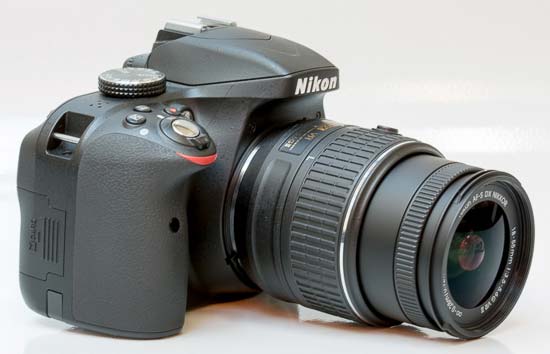 The AF-S DX Nikkor 18-55mm f/3.5-5.6G VR II lens at 18mm
The AF-S DX Nikkor 18-55mm f/3.5-5.6G VR II lens at 18mm
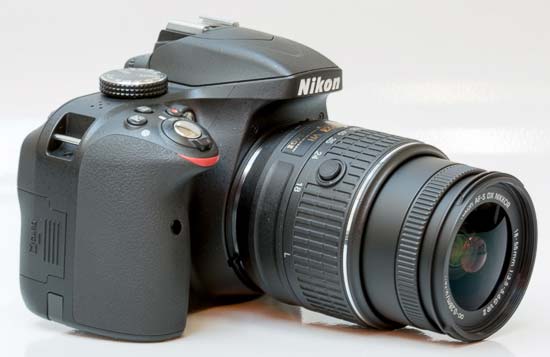 The AF-S DX Nikkor 18-55mm f/3.5-5.6G VR II lens at 55mm
The AF-S DX Nikkor 18-55mm f/3.5-5.6G VR II lens at 55mm
Despite its low price-tag, the build quality of the AF-S DX Nikkor 18-55mm f/3.5-5.6G VR II is acceptable. The lens feels solid enough in your hand, even though the outer barrel and the 52mm filter thread are plastic. The focusing ring is wide, ridged and rubberised. As this is a G series lens, it has no aperture ring - no big deal unless you wanted to use it on a very old film body.
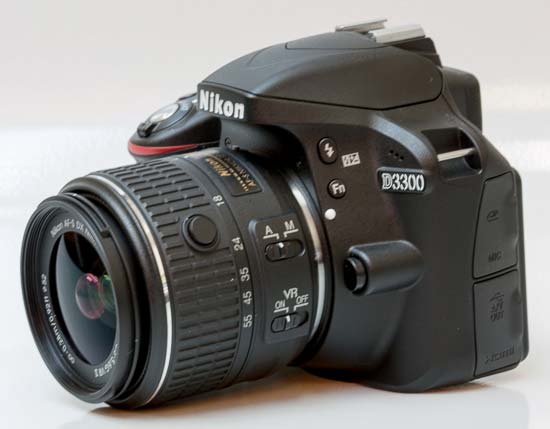 Front of the AF-S DX Nikkor 18-55mm f/3.5-5.6G VR II lens, locked
Front of the AF-S DX Nikkor 18-55mm f/3.5-5.6G VR II lens, locked
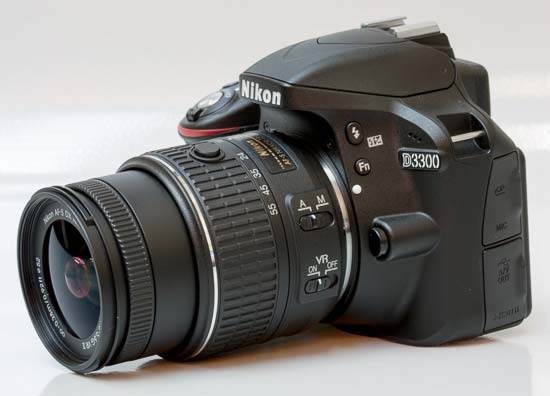 Front of the AF-S DX Nikkor 18-55mm f/3.5-5.6G VR II lens at 18mm
Front of the AF-S DX Nikkor 18-55mm f/3.5-5.6G VR II lens at 18mm
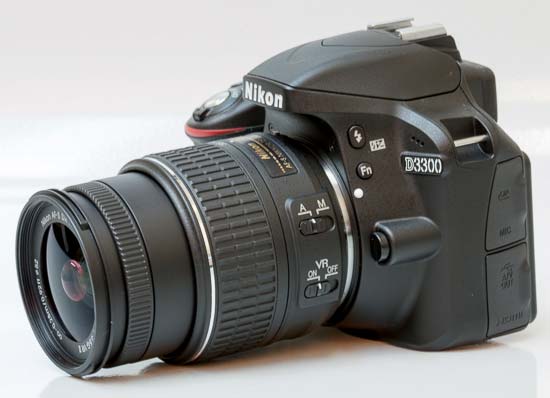 Front of the AF-S DX Nikkor 18-55mm f/3.5-5.6G VR II lens at 55mm
Front of the AF-S DX Nikkor 18-55mm f/3.5-5.6G VR II lens at 55mm
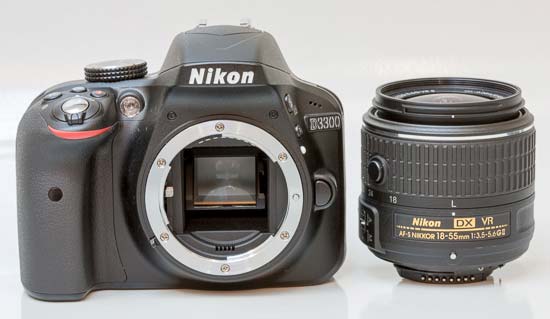 The AF-S DX Nikkor 18-55mm f/3.5-5.6G VR II lens alongside the D3300
The AF-S DX Nikkor 18-55mm f/3.5-5.6G VR II lens alongside the D3300
The AF-S DX Nikkor 18-55mm f/3.5-5.6G VR II is the first ever retractable lens from Nikon, which makes it easier to store and carry than standard lenses. When set to the L position, the lens measures about 6.5cms. When unlocked and set to the 18mm position, the lens measures about 9.5cms. If the lens is locked when you turn on the camera, a message is displayed - "Before taking photos, rotate the zoom ring to extend the lens" (on the D3300 that we tested the lens with).
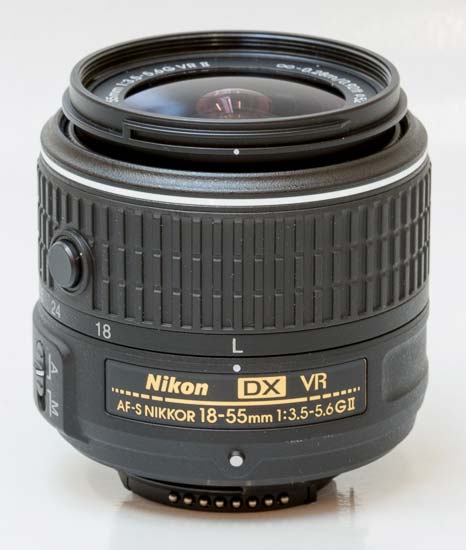 Side of the AF-S DX Nikkor 18-55mm f/3.5-5.6G VR II lens
Side of the AF-S DX Nikkor 18-55mm f/3.5-5.6G VR II lens
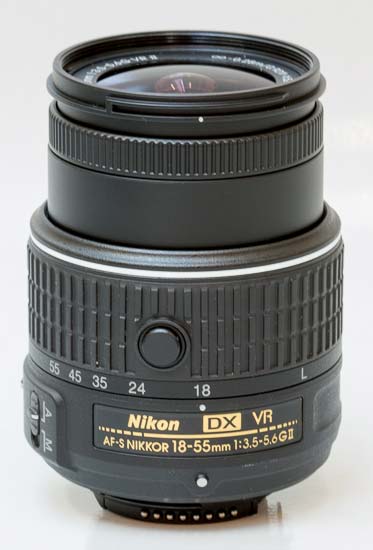 Side of the AF-S DX Nikkor 18-55mm f/3.5-5.6G VR II lens, unlocked
Side of the AF-S DX Nikkor 18-55mm f/3.5-5.6G VR II lens, unlocked
The first control on the lens barrel is a focus mode switch with A and M settings. Note that this solution does not allow for instant manual override when the focus mode switch is in the A position. Instead you have to set the switch to the M position first in order to manually focus, using the thin ring located at the end of the lens.
Below the focus mode selector is a similar sliding switch for the Vibration Reduction system. Nikon claims an advantage of “up to four stops” for the Vibration Reduction II system employed in the AF-S DX Nikkor 18-55mm f/3.5-5.6G VR II lens - and while such good results are probably the exception rather than the rule, we had no problems taking sharp hand-held shots with the lens mounted to a Nikon D3300 body at shutter speeds at least 3 stops slower than the focal length would allow.
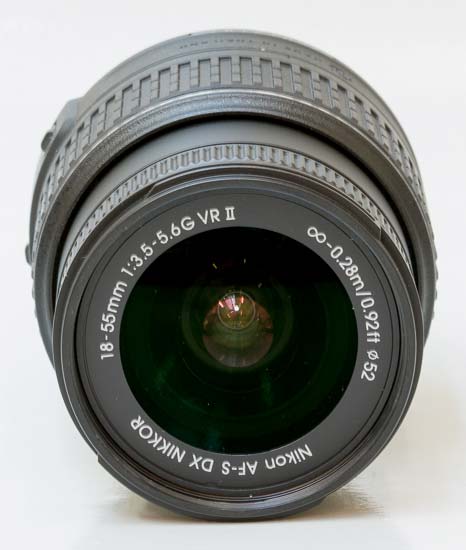 Front of the AF-S DX Nikkor 18-55mm f/3.5-5.6G VR II lens
Front of the AF-S DX Nikkor 18-55mm f/3.5-5.6G VR II lens
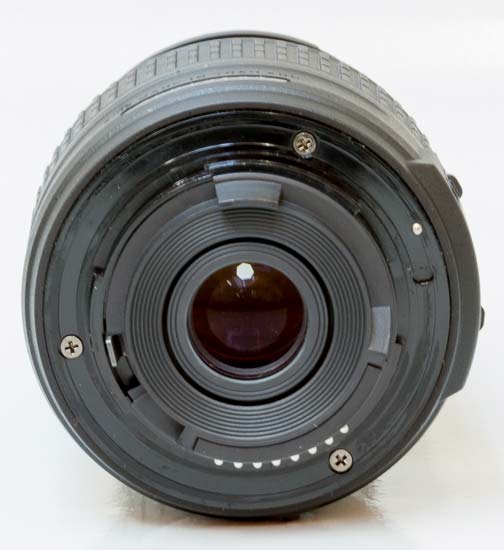 Rear of the AF-S DX Nikkor 18-55mm f/3.5-5.6G VR II lens
Rear of the AF-S DX Nikkor 18-55mm f/3.5-5.6G VR II lens
The lens mount is made of hard plastic rather than metal. Note that there's no rubber gasket around the lens mount – your camera body may be weather sealed but this lens is not, so think twice before taking it to rainy or dusty locales.
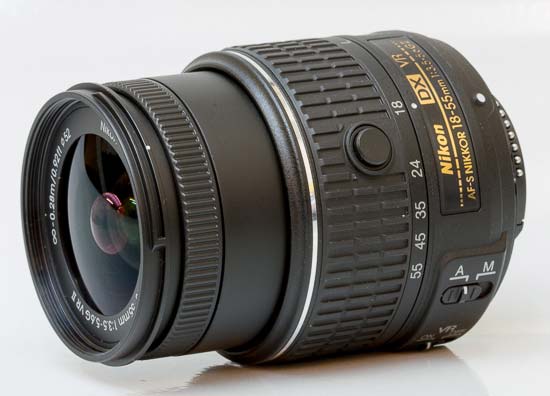 Front of the AF-S DX Nikkor 18-55mm f/3.5-5.6G VR II lens
Front of the AF-S DX Nikkor 18-55mm f/3.5-5.6G VR II lens
 Rear of the AF-S DX Nikkor 18-55mm f/3.5-5.6G VR II lens
Rear of the AF-S DX Nikkor 18-55mm f/3.5-5.6G VR II lens
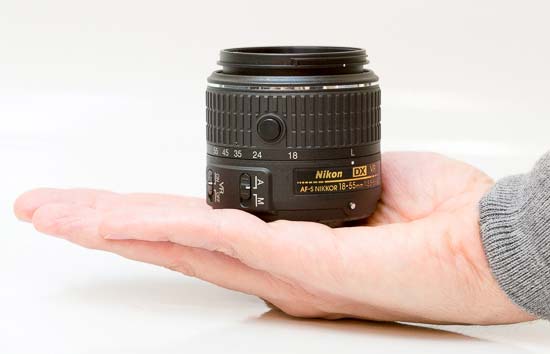 The AF-S DX Nikkor 18-55mm f/3.5-5.6G VR II lens in-hand
The AF-S DX Nikkor 18-55mm f/3.5-5.6G VR II lens in-hand
The AF-S DX Nikkor 18-55mm f/3.5-5.6G VR II lens doesn't ship with either a lens hood or a bag.
Auto-focus
The AF-S DX Nikkor 18-55mm f/3.5-5.6G VR II lens features a Silent Wave Motor (SWM) that allows near-silent auto-focusing on all Nikon DSLR cameras. In use, we found the focusing to be pretty quiet and pleasingly fast - but not instantaneous - with the lens mounted to a Nikon D3300 body.
The internal barrel extends when zoomed out to 18mm, before retracting to its shortest position at 35mm, then extending again when zoomed to 55mm. The front of the lens does not rotate on focus, which is good news for those who use polarisers or ND grads on a regular basis.
Chromatic Aberrations
Lateral chromatic aberrations, typically seen as blue or purple fringes along contrasty edges, and longitudinal chromatic aberrations, which is green fringing evident in blurred backgrounds and magenta fringes sometimes appearing in out-of-focus foregrounds, are both well-controlled with this lens - the examples below show the worst-case scenarios.
 |
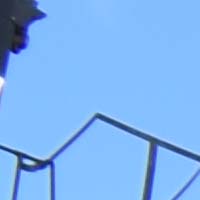 |
Light Fall-off
With the AF-S DX Nikkor 18-55mm f/3.5-5.6G VR II lens wide open, you can see some heavy light fall-off in the corners and along the frame edges. Stopping down helps, although to completely get rid of this phenomenon, you will need to use an f-stop of f/8 or smaller. There's also some very obvious barrel distortion at 18mm and mild pincushioning at 55mm, pretty much what you'd expect from an inexpensive kit zoom.
 Vignetting at 18mm
Vignetting at 18mm
 Vignetting at 55mm
Vignetting at 55mm
Macro
The AF-S DX Nikkor 18-55mm f/3.5-5.6G VR II is not a macro lens, but it does deliver quite decent close-up performance. The closest focusing distance is 25cm if you manually focus (28cm if you auto-focus), and Nikon quotes a maximum magnification of 0.36x for the lens. The following example illustrates how close you can get to the subject, in this case a CompactFlash card.
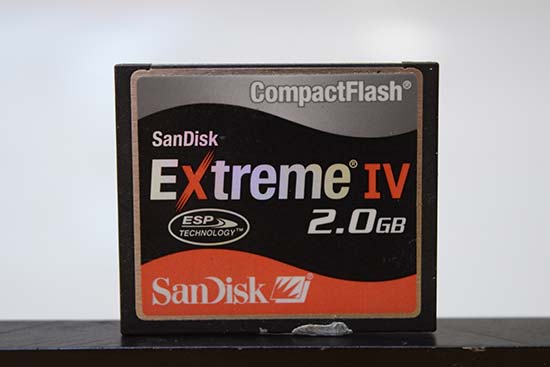 Close-up performance
Close-up performance
Bokeh
Bokeh is a word used for the out-of-focus areas of a photograph, and is usually described in qualitative terms, such as smooth / creamy / harsh etc. Nikon have employed an iris diaphragm with 7 rounded blades for a pleasing rendering of the out-of-focus highlights. Based on what we have seen, we can say that they largely succeeded. Below you'll find some examples, but you are also encouraged to check out our sample images.
 |
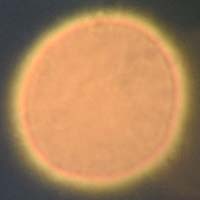 |
 |
 |
Sharpness
In order to show you how sharp this lens is, we are providing 100% crops on the following pages.
-
Ease
of Use -
Sample
Images -
Lens
Specs -
Rating &
Conclusion -
Main
Rivals -
Review
Roundup - Comment
